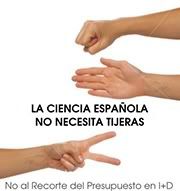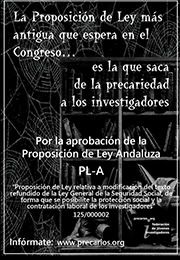sábado, 1 de octubre de 2011
Ciencia divertida: los Premios Ig Nobel 2011/Funny Science: the 2011 Ig Nobel Prizes
Investigación que hace SONREIR y después PENSAR.
Los premios Ig Nobel 2011, instituidos para premiar aquellas investigaciones que parecen broma pero que son reales, fueron entregados el 29 de septiembre.
FISIOLOGÍA: Anna Wilkinson, Natalie Sebanz, Isabella Mandl and Ludwig Huber por su estudio "No hay evidencias de que el bostezo sea contagioso en las tortugas de patas rojas".
REFERENCIA: 'No Evidence Of Contagious Yawning in the Red-Footed Tortoise Geochelone carbonaria," Anna Wilkinson, Natalie Sebanz, Isabella Mandl, Ludwig Huber, Current Zoology, vol. 57, no. 4, 2011. pp. 477-84.
QUÍMICA: Makoto Imai, Naoki Urushihata, Hideki Tanemura, Yukinobu Tajima, Hideaki Goto, Koichiro Mizoguchi and Junichi Murakami, por determinar la densidad óptima que debe tener un aerosol de wasabi (rábano picante japonés) para despertar a personas dormidas en situaciones de fuego u otras emergencias, y por aplicar ese conocimiento a inventar la alarma "wasabi".
REFERENCIA: US patent application 2010/0308995 A1. Filing date: Feb 5, 2009.
MEDICINA: Mirjam Tuk, Debra Trampe y Luk Warlop conjuntamente con Matthew Lewis, Peter Snyder y Robert Feldman, Robert Pietrzak, David Darby and Paul Maruff por demostrar que la gente toma mejores decisiones sobre algunas cosas, y peores decisiones sobre otras, cuando tiene fuertes ganas de orinar.
REFERENCIA: "Inhibitory Spillover: Increased Urination Urgency Facilitates Impulse Control in Unrelated Domains," Mirjam A. Tuk, Debra Trampe and Luk Warlop, Psychological Science, vol. 22, no. 5, May 2011, pp. 627-633.
REFERENCIA: "The Effect of Acute Increase in Urge to Void on Cognitive Function in Healthy Adults," Matthew S. Lewis, Peter J. Snyder, Robert H. Pietrzak, David Darby, Robert A. Feldman, Paul T. Maruff, Neurology and Urodynamics, vol. 30, no. 1, January 2011, pp. 183-7.
PSICOLOGÍA: Karl Halvor Teigen por tratar de comprender el siginificado de los suspiros.
REFERENCIA: "Is a Sigh 'Just a Sigh'? Sighs as Emotional Signals and Responses to a Difficult Task," Karl Halvor Teigen, Scandinavian Journal of Psychology, vol. 49, no. 1, 2008, pp. 49–57.
LITERATURA: John Perry por su Teoría de la Procrastinación (postergar las cosas urgentes) Estructurada que dice: Para obtener grandes logros hay que trabajar siempre en algo que sea importante o necesario, y que nos sirva además para evitar trabajar sobre algo todavía más importante.
REFERENCIA: "How to Procrastinate and Still Get Things Done," John Perry, Chronicle of Higher Education, February 23, 1996. Later republished elsewhere under the title "Structured Procrastination."
BIOLOGÍA: Darryl Gwynne y David Rentz por descubrir que algunos escarabajos quieren aparearse con botellas de cerveza de una determinada marca australiana.
REFERENCIA: "Beetles on the Bottle: Male Buprestids Mistake Stubbies for Females (Coleoptera)," D.T. Gwynne, and D.C.F. Rentz, Journal of the Australian Entomological Society, vol. 22, , no. 1, 1983, pp. 79-80
REFERENCIA: "Beetles on the Bottle," D.T. Gwynne and D.C.F. R
FÍSICA: Philippe Perrin, Cyril Perrot, Dominique Deviterne, Bruno Ragaru, y Herman Kingma por demostrar que los lanzadores de disco se marean (al dar vueltas) y los de martillo no.
REFERENCIA: "Dizziness in Discus Throwers is Related to Motion Sickness Generated While Spinning," Philippe Perrin, Cyril Perrot, Dominique Deviterne, Bruno Ragaru and Herman Kingma, Acta Oto-laryngologica, vol. 120, no. 3, March 2000, pp. 390–5.
MATEMÁTICAS: Dorothy Martin (que predijo el fin del mundo para 1954), Pat Robertson (que lo hizo para 1982), Elizabeth Clare Prophet (que lo hizo para 1990), Lee Jang Rim (que lo hizo para 1992), Credonia Mwerinde (que lo hizo para 1999) y Harold Camping of the USA (que lo hizo para el 6 de septiembre de 1994 y luego para el 21 de octubre de 2011) por enseñar al mundo a tener cuidado cuando se hacen suposicioenes y cálculos matemáticos.
PREMIO DE LA PAZ: Arturas Zuokas alcalde de Vilnius, Lituania, por demostrar como solucionar el problema de los coches de lujo mal aparcados, pasando por encima con un tanque.
REFERENCIA: VIDEO and OFFICIAL CITY INFO
SALUD PÚBLICA: John Senders por realizar una serie de experimentos en los que una persona conduce un automóvil por una autopista mientras se le tapan repetidamente los ojos .
REFERENCIA: "The Attentional Demand of Automobile Driving," John W. Senders, et al., Highway Research Record, vol. 195, 1967, pp. 15-33.
Research that makes people LAUGH and then THINK.
The Ig Nobel Prizes 2011, acknowledging every year research that seems a pun but is real, were announced and awarded on September 29
PHYSIOLOGY PRIZE: Anna Wilkinson (of the UK), Natalie Sebanz (of THE NETHERLANDS, HUNGARY, and AUSTRIA), Isabella Mandl (of AUSTRIA) and Ludwig Huber (of AUSTRIA) for their study "No Evidence of Contagious Yawning in the Red-Footed Tortoise."
REFERENCE: 'No Evidence Of Contagious Yawning in the Red-Footed Tortoise Geochelone carbonaria," Anna Wilkinson, Natalie Sebanz, Isabella Mandl, Ludwig Huber, Current Zoology, vol. 57, no. 4, 2011. pp. 477-84.
CHEMISTRY PRIZE: Makoto Imai, Naoki Urushihata, Hideki Tanemura, Yukinobu Tajima, Hideaki Goto, Koichiro Mizoguchi and Junichi Murakami of JAPAN, for determining the ideal density of airborne wasabi (pungent horseradish) to awaken sleeping people in case of a fire or other emergency, and for applying this knowledge to invent the wasabi alarm.
REFERENCE: US patent application 2010/0308995 A1. Filing date: Feb 5, 2009.
MEDICINE PRIZE: Mirjam Tuk (of THE NETHERLANDS and the UK), Debra Trampe (of THE NETHERLANDS) and Luk Warlop (of BELGIUM). and jointly to Matthew Lewis, Peter Snyder and Robert Feldman (of the USA), Robert Pietrzak, David Darby, and Paul Maruff (of AUSTRALIA) for demonstrating that people make better decisions about some kinds of things — but worse decisions about other kinds of things‚ when they have a strong urge to urinate.
REFERENCE: "Inhibitory Spillover: Increased Urination Urgency Facilitates Impulse Control in Unrelated Domains," Mirjam A. Tuk, Debra Trampe and Luk Warlop, Psychological Science, vol. 22, no. 5, May 2011, pp. 627-633.
REFERENCE: "The Effect of Acute Increase in Urge to Void on Cognitive Function in Healthy Adults," Matthew S. Lewis, Peter J. Snyder, Robert H. Pietrzak, David Darby, Robert A. Feldman, Paul T. Maruff, Neurology and Urodynamics, vol. 30, no. 1, January 2011, pp. 183-7.
PSYCHOLOGY PRIZE: Karl Halvor Teigen of the University of Oslo, NORWAY, for trying to understand why, in everyday life, people sigh.
REFERENCE: "Is a Sigh 'Just a Sigh'? Sighs as Emotional Signals and Responses to a Difficult Task," Karl Halvor Teigen, Scandinavian Journal of Psychology, vol. 49, no. 1, 2008, pp. 49–57.
LITERATURE PRIZE: John Perry of Stanford University, USA, for his Theory of Structured Procrastination, which says: To be a high achiever, always work on something important, using it as a way to avoid doing something that's even more important.
REFERENCE: "How to Procrastinate and Still Get Things Done," John Perry, Chronicle of Higher Education, February 23, 1996. Later republished elsewhere under the title "Structured Procrastination."
BIOLOGY PRIZE: Darryl Gwynne (of CANADA and AUSTRALIA and the UK and the USA) and David Rentz (of AUSTRALIA and the USA) for discovering that a certain kind of beetle mates with a certain kind of Australian beer bottle
REFERENCE: "Beetles on the Bottle: Male Buprestids Mistake Stubbies for Females (Coleoptera)," D.T. Gwynne, and D.C.F. Rentz, Journal of the Australian Entomological Society, vol. 22, , no. 1, 1983, pp. 79-80
REFERENCE: "Beetles on the Bottle," D.T. Gwynne and D.C.F. Rentz, Antenna: Proceedings (A) of the Royal Entomological Society London, vol. 8, no. 3, 1984, pp. 116-7.
PHYSICS PRIZE: Philippe Perrin, Cyril Perrot, Dominique Deviterne and Bruno Ragaru (of FRANCE), and Herman Kingma (of THE NETHERLANDS), for determining why discus throwers become dizzy, and why hammer throwers don't.
REFERENCE: "Dizziness in Discus Throwers is Related to Motion Sickness Generated While Spinning," Philippe Perrin, Cyril Perrot, Dominique Deviterne, Bruno Ragaru and Herman Kingma, Acta Oto-laryngologica, vol. 120, no. 3, March 2000, pp. 390–5.
MATHEMATICS PRIZE: Dorothy Martin of the USA (who predicted the world would end in 1954), Pat Robertson of the USA (who predicted the world would end in 1982), Elizabeth Clare Prophet of the USA (who predicted the world would end in 1990), Lee Jang Rim of KOREA (who predicted the world would end in 1992), Credonia Mwerinde of UGANDA (who predicted the world would end in 1999), and Harold Camping of the USA (who predicted the world would end on September 6, 1994 and later predicted that the world will end on October 21, 2011), for teaching the world to be careful when making mathematical assumptions and calculations.
PEACE PRIZE: Arturas Zuokas, the mayor of Vilnius, LITHUANIA, for demonstrating that the problem of illegally parked luxury cars can be solved by running them over with an armored tank.
REFERENCE: VIDEO and OFFICIAL CITY INFO
PUBLIC SAFETY PRIZE: John Senders of the University of Toronto, CANADA, for conducting a series of safety experiments in which a person drives an automobile on a major highway while a visor repeatedly flaps down over his face, blinding him.
REFERENCE: "The Attentional Demand of Automobile Driving," John W. Senders, et al., Highway Research Record, vol. 195, 1967, pp. 15-33. VIDEO
Tomado de /Taken from Improbable Research
Suscribirse a:
Enviar comentarios (Atom)













No hay comentarios:
Publicar un comentario